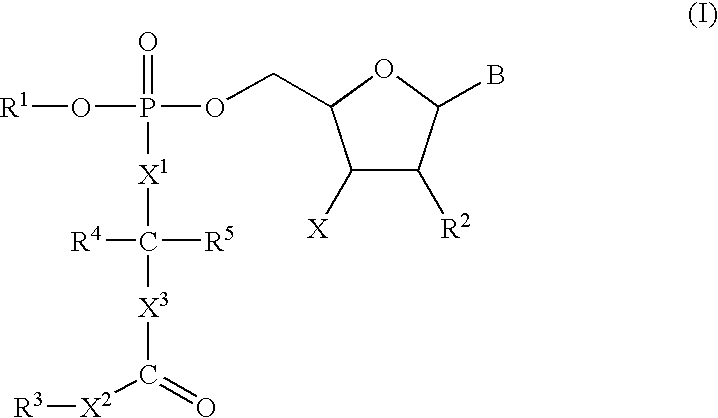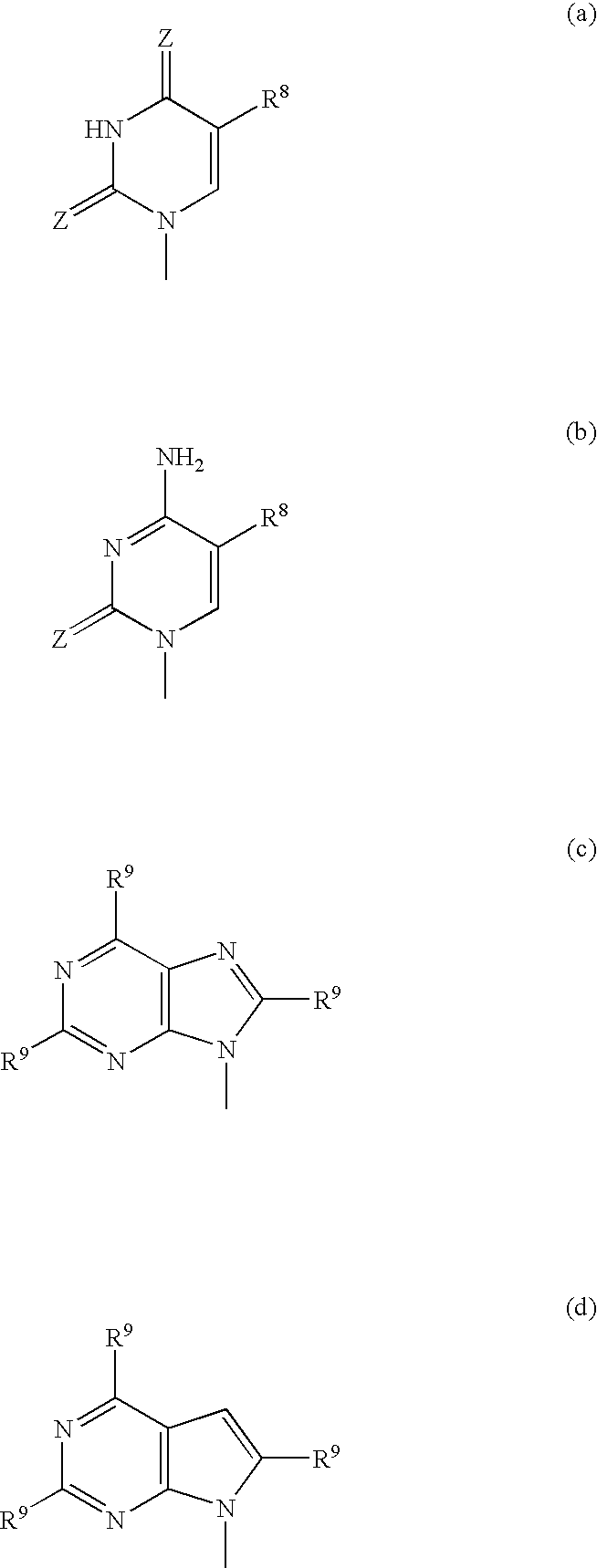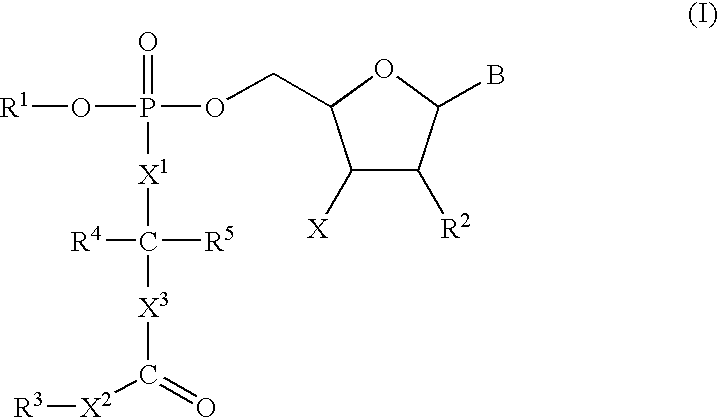Nucleoside compounds in hcv
- Summary
- Abstract
- Description
- Claims
- Application Information
AI Technical Summary
Problems solved by technology
Method used
Image
Examples
example 1
3′-Deoxyguanosine-5′-[4-(1,1-dimethylethyl)phenyl-N-[(1S)-1-methyl-2-oxo-2-(phenylmethoxy)ethyl]phosphoramidate]
A suspension of 3′-deoxyguanosine (27 mg) in pyridine (1 mL) was stirred under nitrogen and treated with 11.0M tert-butyl magnesium chloride in tetrahydrofuran (220 μL). The resulting solution was stirred at 20° C. for 1 h and then treated with a solution of Intermediate 4 (45 mg) in tetrahydrofuran (0.8 mL). The mixture was stirred for a further 18 h and then evaporated to dryness. The residue was partitioned between water (10 mL) and ethyl acetate (25 mL). The organic phase was collected and dried (MgSO4). Removal of solvent gave a colourless gum which was purified on silica gel preparative plates with 8:1 (v:v) dichloromethane:methanol affording the title compound as a solid.
Mass spec (electrospray) m / z calcd for (C30H37N6O8P+H)+: 641.
Found: (M+H)+=641.
example 2
3′-Deoxycytidine-5′-[phenyl-N-[(1S)-2-methoxy-1-methyl-2-oxoethyl]phosphoramidate]
A suspension of 3′-deoxycytidine (25 mg) in pyridine (1 mL) was stirred under nitrogen at −10° C. and treated with 11.0M tert-butyl magnesium chloride in tetrahydrofuran (260 μL). The resulting mixture was stirred for a further 20 rin and then treated with a solution of Intermediate 2 (37 mg) in pyridine (0.6 mL). The mixture was stirred at 0° C. for 4 h and then stored at 0° C. for 18 h. Solvent was removed under reduced pressure. The residue was purified on silica gel preparative plates with 8:1 (v:v) dichloromethane:methanol affording the title compound as a solid.
Mass spec (electrospray) m / z calcd for (C19H25N4O8P+H)+: 469.
Found: (M+H)+=469.
example 3
3′-Deoxycytidine-5′-[phenyl-N-[(1S)-1-methyl-2-oxo-2-(phenylmethoxy)ethyl]phosphoramidate]
To a suspension of 3′-deoxycytidine (25 mg, 0.11 mMol) in dry pyridine (1 ml) was added tert-butylmagnesium chloride (1.0M solution in THF, 352 μl, 0.35 mMol) giving an orange suspension which was stirred at ambient temperature under nitrogen for 1 h. Intermediate 3 (0.14 nmMol, 47.8 mg) in dry THF (1 ml) was added and the reaction mixture was stirred for a further 3.5 h. The reaction was then quenched with methanol (1 ml) and the volatiles were evaporated in vacuo. The residue was partitioned between ethyl acetate and water and the organics were dried (MgSO4), filtered and evaporated to give a white solid (29.5 mg). The crude product was purified on silica gel preparative plates with 9:1 (v:v) dichloromethane:methanol affording the title compound as a white solid.
Mass spec (electrospray) m / z calcd for (C25H29N4O8P+H)+: 545.
Found: (M+W)+=545.
The compounds of Examples 1-...
PUM
 Login to View More
Login to View More Abstract
Description
Claims
Application Information
 Login to View More
Login to View More - R&D
- Intellectual Property
- Life Sciences
- Materials
- Tech Scout
- Unparalleled Data Quality
- Higher Quality Content
- 60% Fewer Hallucinations
Browse by: Latest US Patents, China's latest patents, Technical Efficacy Thesaurus, Application Domain, Technology Topic, Popular Technical Reports.
© 2025 PatSnap. All rights reserved.Legal|Privacy policy|Modern Slavery Act Transparency Statement|Sitemap|About US| Contact US: help@patsnap.com



